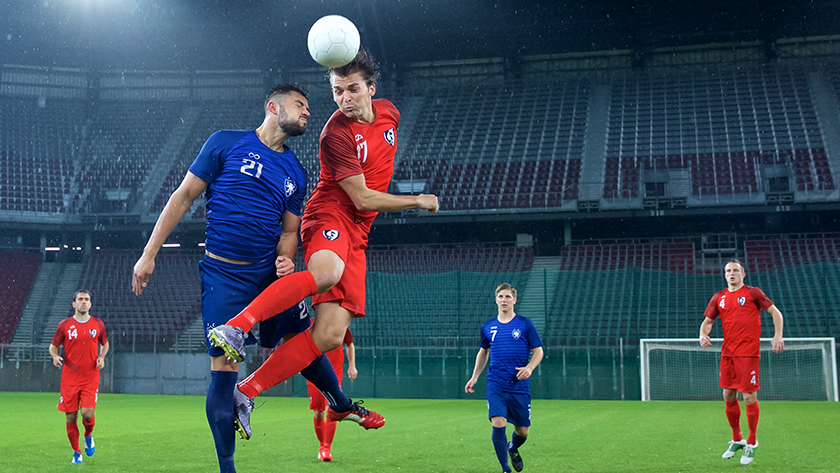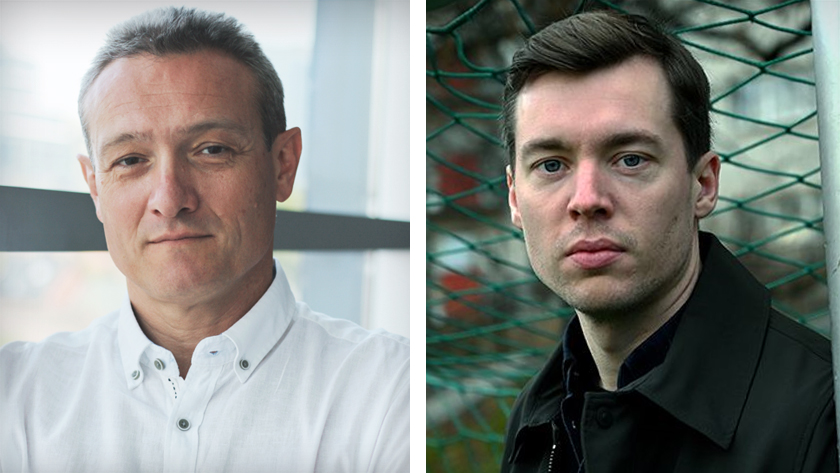
A study from an international team of researchers has identified brain injury blood markers associated with playing soccer.
“Because millions of individuals play soccer, developing tools to study repetitive head impacts in this context could have major implications on public health and, ultimately, how the game is played,” says Dr. Igor Jurisica, a Senior Scientist at UHN’s Schroeder Arthritis Institute who co-led the study with Dr. Stian Bahr Sandmo, a Researcher at the Oslo Sports Trauma Research Center at the Norwegian School of Sport Sciences.
Soccer is the most popular sport in the world. It is also a potential source of brain injury. Over a fifth of all soccer injuries are concussions and professional soccer players are susceptible to chronic brain damage. Despite these risks, the effects of playing soccer on brain health are not well understood.
To identify biomarkers of brain injury, the research team examined the levels of a relatively stable molecule in the blood known as microRNA (miRNA). These molecules are produced throughout the body (including in the brain) and are known to affect the activity of genes. “Because miRNA molecules can affect gene expression, in addition to serving as reliable markers of injury, they could provide deeper insights into underlying disease processes,” says Dr. Jurisica.
For their analyses, the team examined 274 blood samples from males aged 18 to 35 who played in the Norwegian premier league during the 2004 and 2005 seasons. The team analyzed samples from players at one and 12 hours after one of three conditions: 1) high-intensity exercise alone, 2) soccer training that involved repetitive headers or 3) accidental head impacts, with or without concussion, during a match.
The research team used samples from players that experienced high intensity exercise alone as a baseline and compared these samples with those from players that repeatedly headed the ball or experienced head impacts. This enabled the researchers to refine their findings and narrow down their search for blood markers for the potentially more damaging activities.
The team found that rigorous exercise led to changes in the levels of seven miRNAs associated with 31 different signalling pathways. In addition to these changes, accidental head impacts led to changes in eight other miRNAs that are linked to 12 signalling pathways. Repetitive headers led to changes in six miRNAs—all of which were linked to the transforming growth factor-beta (TGFB) signalling pathway, which is known to be involved in the inflammatory process.
“The inflammation and other brain changes that athletes experience due to repeated head impacts can eventually lead to neurodegenerative conditions, such as Alzheimer disease and Chronic Traumatic Encephalopathy,” says Dr. Peter Filipčík, a Research Scientist at the Slovak Academy of Science. “Identifying the molecular links between brain injury and these diseases is necessary to better understand disease mechanisms in this population and can lead to improved diagnostic tools and therapies.”
“This is the first study to explore whether blood-based markers exist for the types of brain injuries that are commonly associated with playing soccer. Because we found distinct molecular signatures associated with heading the ball alone and with more serious, accidental head impacts, our approach may have the potential to discriminate between different degrees of brain injury,” concludes Dr. Sandmo.
Although these findings are preliminary, they lay the foundation for future studies aimed at developing a sensitive test for soccer-related brain injury. The blood markers that the team identified also represent a set of valuable tools to explore the mechanisms underlying soccer-related brain injury, as well as ways to prevent it.
This work was supported by the Ministry of Education, Science, Research and Sport of the Slovak Republic through BrainTest, s.r.o.; ERA-NET Neuron; The Research Council of Norway; the International Federation of Association Football Medical Assessment and Research Center; and the UHN Foundation. Dr. Igor Jurisica is a Professor in Medical Biophysics and Computer Science at the University of Toronto.
Sandmo SB, Matyasova K, Filipcik P, Cente M, Koerte IK, Pasternak O, Andersen TE, Straume-Næsheim TM, Bahr R, Jurisica I. Changes in circulating microRNAs following head impacts in soccer. Brain Inj. 2022 Feb 16. doi: 10.1080/02699052.2022.2034042.

(L-R) Senior authors of the study, Dr. Igor Jurisica, a Senior Scientist at the Schroeder Arthritis Institute, and Dr. Stian Bahr Sandmo, a Researcher at the Oslo Sports Trauma Research Center at the Norwegian School of Sport Sciences.




